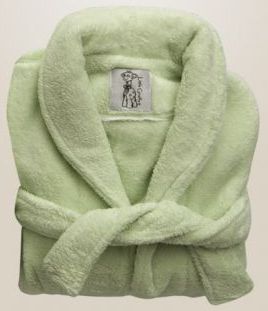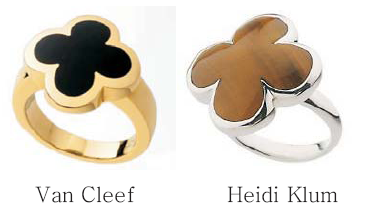Los Angeles, CA – In Wham-O’s trademark and trade dress trial in October of 2007, a jury awarded Wham-O six-million-dollars in damages for willful trademark infringement of its registered trademarks, willful trademark dilution, and willful false advertising in connection with Toyquest’s use of the yellow color of Wham-O’s Slip-n-Slide toys, which color functions as a trademark. Toyquest is a dba of SLB Toys USA. The Court also entered a permanent injunction against the infringers and ordered that the infringer, including its officers, agents, servants and employees, forever refrain “from using the color yellow on the sliding surface of water slide toys, or packaging or advertising depicting the same, or any mark similar thereto or likely to cause confusion therewith.” The Court, however, denied WhamO’s request to order destruction of infringing articles and denied Wham-O’s request to order compliance reporting by the infringers.
 In a newly filed trademark infringement, trademark dilution, false advertising, unfair competition (17200), contributory infringement, contributory trademark dilution, and judgment debtor’s interest (Cal. Civ. Proc. Code § 708.210) lawsuit, Wham-O alleges that SLB Toys initiated an elaborate scheme designed to evade judgment and deprive Wham-O of its monetary award through an assignment for benefit of creditors. Wham-O alleges that the individual defendants, who were officers of the defendant SLB Toys, have “flagrantly disregarded the terms of this Court’s injunction by continuing to sell and distribute to retailers unauthorized slides bearing” the yellow waterslide trademark and to advertise the same. Wham-O asserts that SLB Toys was merely an undercapitalized shell corporation that failed to follow corporate formalities and the individual officers and other companies which are owned by the officers are SLB Toys’ alter egos.
In a newly filed trademark infringement, trademark dilution, false advertising, unfair competition (17200), contributory infringement, contributory trademark dilution, and judgment debtor’s interest (Cal. Civ. Proc. Code § 708.210) lawsuit, Wham-O alleges that SLB Toys initiated an elaborate scheme designed to evade judgment and deprive Wham-O of its monetary award through an assignment for benefit of creditors. Wham-O alleges that the individual defendants, who were officers of the defendant SLB Toys, have “flagrantly disregarded the terms of this Court’s injunction by continuing to sell and distribute to retailers unauthorized slides bearing” the yellow waterslide trademark and to advertise the same. Wham-O asserts that SLB Toys was merely an undercapitalized shell corporation that failed to follow corporate formalities and the individual officers and other companies which are owned by the officers are SLB Toys’ alter egos.
Through the creditor’s suit against Wal-Mart, Target, TRU, and Kmart, Wham-O attempts to recover from the retailers several million dollars in funds that are payable to the true judgment debtor, Manley Toys – which was allegedly set up by the same individual defendants that were officers in SLB Toys. The case is titled: WHAM-O, Inc. v. Manley Toys, LTD., CV08-01281 PSG (C.D. California).
 Los Angeles Intellectual Property Trademark Attorney Blog
Los Angeles Intellectual Property Trademark Attorney Blog


 Plaintiff asserts that its trade dress includes the appearance of its products, including “the shape and dimensions of satin trim to plush fabric,” “the color combinations of various fabrications,” “the texture of its plush or luxury fabrics,” “the patterns of Little Giraffe’s robes,” color coordinated pieces to the colors of the products of Little Giraffe, and the placement location of the Little Giraffe logo. Plaintiff also asserts that its trade secrets include “vendors and suppliers of fabric and trim, its know-how concerning the manufacturing process,” “the cutting and sewing contractors” it uses in the manufacturing process, its vendor lists, customer lists, and proprietary financial documents. Plaintiff alleges that her daughter, in association with co-defendant “Rosalie & Friends, Inc. has displayed and offered for sale Votre Luxe’s line of products that are confusingly similar to the products Little giraffe manufactures and sells.”
Plaintiff asserts that its trade dress includes the appearance of its products, including “the shape and dimensions of satin trim to plush fabric,” “the color combinations of various fabrications,” “the texture of its plush or luxury fabrics,” “the patterns of Little Giraffe’s robes,” color coordinated pieces to the colors of the products of Little Giraffe, and the placement location of the Little Giraffe logo. Plaintiff also asserts that its trade secrets include “vendors and suppliers of fabric and trim, its know-how concerning the manufacturing process,” “the cutting and sewing contractors” it uses in the manufacturing process, its vendor lists, customer lists, and proprietary financial documents. Plaintiff alleges that her daughter, in association with co-defendant “Rosalie & Friends, Inc. has displayed and offered for sale Votre Luxe’s line of products that are confusingly similar to the products Little giraffe manufactures and sells.” Van Cleef alleges that defendants intentionally and willfully copied the Alhambra designs, which mainly feature a four leaf clover. Van Cleef continues that defendants, by appropriating the goodwill built up by plaintiff are causing confusion in the market place, in that consumers are often confused between the plaintiff’s designs and those of defendants.
Van Cleef alleges that defendants intentionally and willfully copied the Alhambra designs, which mainly feature a four leaf clover. Van Cleef continues that defendants, by appropriating the goodwill built up by plaintiff are causing confusion in the market place, in that consumers are often confused between the plaintiff’s designs and those of defendants.